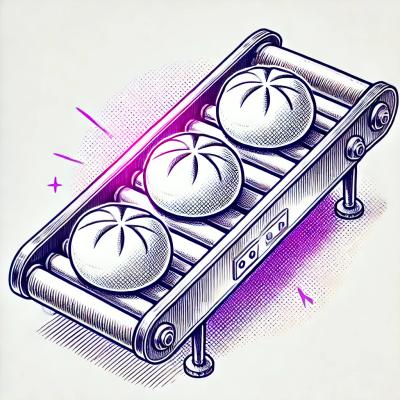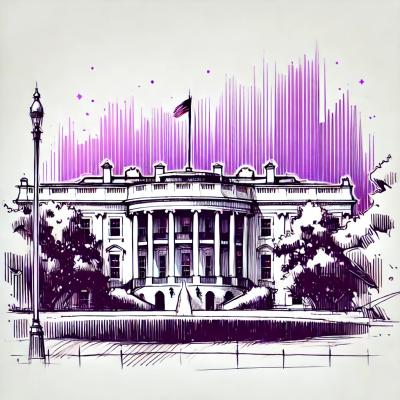OBJ2GLTF
Convert OBJ assets to glTF 2.0.
Getting Started
Install Node.js if you don't already have it, and then:
npm install -g obj2gltf
Using obj2gltf as a command-line tool:
obj2gltf -i model.obj
obj2gltf -i model.obj -o model.gltf
obj2gltf -i model.obj -o model.glb
Using obj2gltf as a library:
Converting an obj model to gltf:
const obj2gltf = require("obj2gltf");
const fs = require("fs");
obj2gltf("model.obj").then(function (gltf) {
const data = Buffer.from(JSON.stringify(gltf));
fs.writeFileSync("model.gltf", data);
});
Converting an obj model to glb
const obj2gltf = require("obj2gltf");
const fs = require("fs");
const options = {
binary: true,
};
obj2gltf("model.obj", options).then(function (glb) {
fs.writeFileSync("model.glb", glb);
});
Material types
Traditionally the .mtl file format describes the Blinn-Phong shading model. Meanwhile glTF 2.0 introduces physically-based
materials.
There are three shading models supported by obj2gltf:
- Metallic roughness PBR
- Specular glossiness PBR (via
KHR_materials_pbrSpecularGlossiness extension) - Unlit materials (via
KHR_materials_unlit extension)
If the material type is known in advance, it should be specified with either the metallicRoughness or specularGlossiness flag.
If lighting information is already present in the model, the unlit flag should be used. This will save the glTF with the KHR_materials_unlit extension.
If the model is created with PBR textures, either the metallicRoughness or specularGlossiness flag should be passed in.
See the table below for more information about how to specify PBR values inside the .mtl file.
If none of these flags are provided, the .mtl is assumed to contain traditional Blinn-Phong materials which will be converted to metallic-roughness PBR.
There may be some quality loss as traditional materials do not map perfectly to PBR materials.
Commonly in PBR workflows the the .mtl file may not exist or its values may be outdated or incorrect.
As a convenience the PBR textures may be supplied directly to the command line.
Mapping of mtl slots to shading models
| Slot | Metallic roughness | Specular glossiness |
|---|
| Ka | occlusion value | occlusion value |
| Ke | emissive color | emissive color |
| Kd | base color | diffuse color |
| Ks | metallic value | specular color |
| Ns | roughness value | glossiness value |
| d | alpha | alpha |
| Tr | 1.0 - alpha | 1.0 - alpha |
| map_Ka | occlusion texture | occlusion texture |
| map_Ke | emissive texture | emissive texture |
| map_Kd | base color texture | diffuse texture |
| map_Ks | metallic texture | specular texture |
| map_Ns | roughness texture | glossiness texture |
| map_Bump | normal texture | normal texture |
Usage
Command line flags:
| Flag | Description | Required |
|---|
-h, --help | Display help. | No |
-i, --input | Path to the obj file. | :white_check_mark: Yes |
-o, --output | Path of the converted glTF or glb file. | No |
-b, --binary | Save as binary glTF (.glb). | No, default false |
-s, --separate | Writes out separate buffers and textures instead of embedding them in the glTF file. | No, default false |
-t, --separateTextures | Write out separate textures only. | No, default false |
--checkTransparency | Do a more exhaustive check for texture transparency by looking at the alpha channel of each pixel. By default textures are considered to be opaque. | No, default false |
--secure | Prevent the converter from reading texture or mtl files outside of the input obj directory. | No, default false |
--packOcclusion | Pack the occlusion texture in the red channel of metallic-roughness texture. | No, default false |
--metallicRoughness | The values in the mtl file are already metallic-roughness PBR values and no conversion step should be applied. Metallic is stored in the Ks and map_Ks slots and roughness is stored in the Ns and map_Ns slots. | No, default false |
--specularGlossiness | The values in the mtl file are already specular-glossiness PBR values and no conversion step should be applied. Specular is stored in the Ks and map_Ks slots and glossiness is stored in the Ns and map_Ns slots. The glTF will be saved with the KHR_materials_pbrSpecularGlossiness extension. | No, default false |
--unlit | The glTF will be saved with the KHR_materials_unlit extension. | No, default false |
--metallicRoughnessOcclusionTexture | Path to the metallic-roughness-occlusion texture that should override textures in the .mtl file, where occlusion is stored in the red channel, roughness is stored in the green channel, and metallic is stored in the blue channel. The model will be saved with a pbrMetallicRoughness material. This is often convenient in workflows where the .mtl does not exist or is not set up to use PBR materials. Intended for models with a single material. | No |
--specularGlossinessTexture | Path to the specular-glossiness texture that should override textures in the .mtl file, where specular color is stored in the red, green, and blue channels and specular glossiness is stored in the alpha channel. The model will be saved with a material using the KHR_materials_pbrSpecularGlossiness extension. | No |
--occlusionTexture | Path to the occlusion texture that should override textures in the .mtl file. | No |
--normalTexture | Path to the normal texture that should override textures in the .mtl file. | No |
--baseColorTexture | Path to the baseColor/diffuse texture that should override textures in the .mtl file. | No |
--emissiveTexture | Path to the emissive texture that should override textures in the .mtl file. | No |
--alphaTexture | Path to the alpha texture that should override textures in the .mtl file. | No |
--input-up-axis | Up axis of the obj. | No |
--output-up-axis | Up axis of the converted glTF. | No |
--triangle-winding-order-sanitization | Apply triangle winding order sanitization. | No |
Build Instructions
Run the tests:
npm run test
To run ESLint on the entire codebase, run:
npm run eslint
To run ESLint automatically when a file is saved, run the following and leave it open in a console window:
npm run eslint-watch
Running Test Coverage
Coverage uses nyc. Run:
npm run coverage
For complete coverage details, open coverage/lcov-report/index.html.
The tests and coverage covers the Node.js module; it does not cover the command-line interface, which is tiny.
Generating Documentation
To generate the documentation:
npm run jsdoc
The documentation will be placed in the doc folder.
Contributions
Pull requests are appreciated. Please use the same Contributor License Agreement (CLA) used for CesiumJS.
Developed by the Cesium team.





